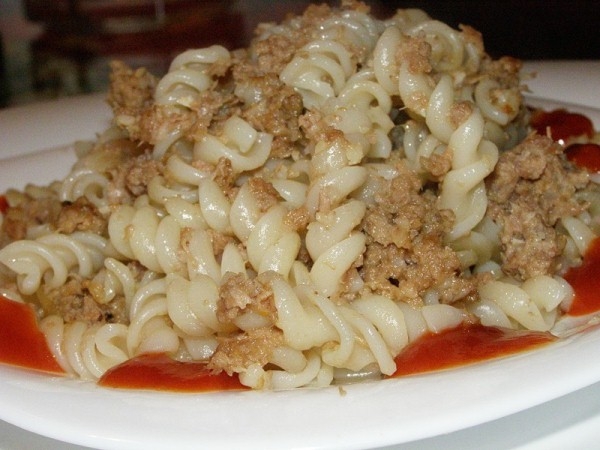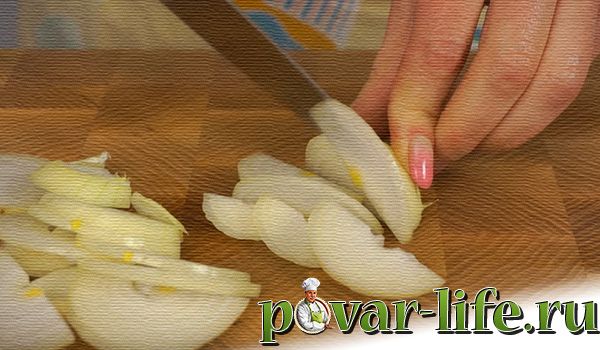Is it possible to be poisoned by bee honey. What can be dangerous honey poisoning
In Russia, honey is a national product, it has always been the best food and drink. Russian life was impossible to imagine without honey. Honeycomb honey, honey cakes, gingerbread, honey kvass, mead - were a real decoration of the table and served as an excellent treat for guests of honor. Honey is also a trouble-free help for a lot of diseases, and an indispensable element of a healthy lifestyle.
Natural honey is a unique gift of nature. It has excellent taste and nutritional qualities, contains almost all the macro-and micronutrients, enzymes, vitamins, hormones, essential oils. Honey is a high-calorie product, a valuable source of carbohydrates. Moreover, all substances are in it in a balanced ratio, which makes their properties highly effective and beneficial to human health. For millennia, people used honey without thinking about its quality. He was the only source of sweetness, and there was nothing to fake or replace him with. There were no problems with environmental pollution of honey either.
In recent years, problems have arisen in determining the quality of honey, its environmental pollution, and the sale of poor quality honey in the markets. Today, the main thing for many beekeepers is profit, so natural, high-quality honey turns into a rarity. By buying it on the market at an exorbitant price, to give a sick child, elderly parents or to eat yourself, we expect beneficial effects, which at best may not be, and at worst, you can even get poisoned.
And so, what kind of honey can you poison?
The main thing is that the honey should not be falsified and not be collected in areas with a high content of toxic substances, since the toxic substances falling on the plants in the honey collected from them are concentrated. Bees are insensitive to many toxic substances, and for people such honey can be very harmful, up to massive and even fatal poisoning (such cases are quite common, since it’s impossible to check the presence of all possible toxic substances in the laboratory such substances too much). Honey collected from honey plants on military grounds, near chemical industry enterprises, large airfields, thermal power plants, in areas of high radioactive contamination is undesirable. Beware of buying honey from apiaries located along highways with heavy traffic. In this honey can be an increased amount of lead compounds and other substances falling on the flowers with the exhaust gases of cars. With nectar and pollen, lead gets into honey, and this is dangerous for the health of those who consume it. Do not buy honey on the side of the road and in general in places where the transport does not breathe. Like a sponge, honey actively absorbs extraneous odors and, worst of all, harmful impurities from exhaust gases.
It is also worth paying attention to what honey is stored in. Honey should be stored in a tightly closed glass, enamel or ceramic container. Galvanized and copper cookware are strictly prohibited! Honey enters a chemical reaction with zinc and copper, being filled with poisonous salts.
It should be remembered that in nature there is a wide variety of plants. Sometimes bees collect honey from plants containing poisonous or harmful substances for humans: from heather, aconite, rhododendron, wild rosemary, hellebore, wolubartilus, etc. Poisonous honey is popularly called "drunk", probably for the similarity of signs of poisoning with honey with signs of alcohol intoxication. When poisoning with "drunk" honey, the temperature rises, there is profuse sweating, nausea, dizziness, bone and joint and. muscle pain, dilated pupils. There comes a general weakness and even loss of consciousness. According to external signs, drunk honey is a little different from edible honey. It can only be distinguished by biological samples on animals.
It is rather difficult to control the ecological purity of the product; it requires expensive analyzes in specialized laboratories. For large quantities of honey, such analyzes can be carried out, but small wholesale and retail buyers have to rely on the good faith of beekeepers. Physical, chemical, and biochemical analyzes can be performed in market laboratories. But will they satisfy us? These analyzes will provide important, but still insufficient information.
Honey is a natural medicine and sweet delicacy, known to humanity for more than one millennium. Of course, this product should be used with great caution, many of its types have a high glycemic index, and in some people it can cause severe allergies. But it turns out that honey can be poisoned, there are many such cases, and you should know that this sweet medicine is sometimes poisonous.
Old heated honey
Manufacturers and consumers of this product still argue about the danger or harmlessness of honey that has undergone high temperature treatment. After all, it was always put in hot tea, and it is still used in the confectionery industry all over the world, where it also heats up strongly. Nevertheless, scientific data prove that hydroxymethylfurfural is formed in honey at high temperatures. This chemical substance - an intermediate product of the decomposition of sugars, is a fusible colorless or yellowish crystals. In 1990, the Scientific and Forensic Center of the Ministry of Internal Affairs of the USSR adopted the "Methodical recommendations of the Ministry of Internal Affairs of the USSR on expert research of honey." They noted that the presence of hydroxymethylfurfural in food products is highly undesirable, since furan derivatives are poisons and cause paralysis in large doses. And even a small amount of this toxin in the human body depresses its nervous system. In the early 2000s, one of the structural units of the Federal State Budgetary Institution "Center for Monitoring and Clinical and Economic Expertise" of the Federal Service for Supervision in the Sphere of Health Care conducted laboratory experiments that showed that hydroxymethylfurfural also has carcinogenic properties and affects the central nervous system. system, contributing to the development of malignant tumors. It should be said that the formation of a dangerous amount of hydroxymethylfurfural in honey is possible if the product is heated repeatedly. Ordinary people really do not. But unscrupulous distributors, beekeepers, presenting an old, stagnant product as fresh, very often heat it, and sometimes they have to do this more than once. Very few people buy a sugared delicacy, but transparent, volatile, and even cheap, is realized much faster. Old honey looks so fresh just after heating, but there is so much dangerous toxin in it that you can seriously poison the body.
Raw unripe honey
At the other extreme, the current fashion for raw honey is a product that has not been pasteurized. Due to this, plant spores and pollen remain inside the honeycomb. Many people think that such honey is the most natural and healthy. Only it is not. Bee collectors collect it before the bees manage to seal it in a honeycomb. The result is a watery syrup with honey taste and smell, which gradually crystallizes, forming a separate liquid and candied strata. For a long time such a product is dangerous to store, it has an alcohol taste and it is easy to poison yourself with such honey. But the worst thing in the other. Employees of the Moscow Research Institute of Epidemiology and Microbiology of the Ministry of Health of the Russian Federation warn that unripe honey often contains botulism controversy. In the case of a weakened immunity, that is, precisely at that period when a person remembers honey and wants to take advantage of its healing properties, botulism controversy provokes the development of severe toxic and infectious disease in the body. It is characterized by damage to the nervous system - the medulla and the spinal cord, and negatively affects the functioning of the visual centers.
Drunk Honey
This product can look very high quality and have a wonderful aroma. But after using it, a person feels signs similar to alcohol poisoning. In the worst cases, there may be dizziness, nausea, weakness, excessive sweating and even loss of consciousness. This is due to the properties of honey, which he acquires after the bees collect nectar from the "wrong" flowers and plants. Since ancient times, beekeepers include oleanders, mountain laurel, calmia, azaleas, wolves, aconites, and dope. Not so long ago, in Athens, at a congress of the European Society of Cardiology, a Turkish doctor, Ugur Turk, presented data on cases of poisoning by such “drunk honey” of his compatriots. They ended up in intensive care with signs of severe food intoxication and serious heart failure after eating honey, in which nectar was found from the Black Sea species of rhododendron flowers. In the leaves, roots and flowers of all types of rhododendrons, a group of toxic substances was identified - grayanottoxins. They cause an increased permeability of the membranes of the neuromuscular tissue to sodium ions, which further, with a high dose of toxin in the body, leads to serious disturbances in the functioning of the heart muscles. According to Dr. Ugur Turk, presenting this case at a cardiology congress, the increase in honey consumption in Europe means that doctors should be aware of the possibility of poisoning with this product, which can also provoke cardiovascular insufficiency.
Honey with pesticides
Honey is really more and more gaining popularity among the population of Western Europe. That is why in 2016, Swiss experts led by Dr. Edward Mitchell from the University of Neuchâtel tested 198 honey samples from all the countries exporting this sweet product for pesticide content. They found that in 75% of the specimens presented, at least one species is contained - neonicotinoid, a poison from the class of insecticides. And about 10% of the samples contained 4 or 5 types of pesticides immediately. In most cases, the content of these substances in honey did not exceed the level at which the consumption of this product becomes dangerous for people. But 7% of the samples from the subjects were still such, and scientists called this a very disturbing signal. After all, a neonicotinoid, as a chemical substance, in low doses causes food poisoning and nervous excitement in a person, and in high doses leads to paralysis and death. Therefore, in 2013, the European Commission legally restricted the use of this class of pesticides in agriculture. However, later studies by Swiss scientists suggest that this decree is not being implemented in most countries.
True honey poisoning is extremely rare, however, if consumed irrationally, the sweet product can cause significant health damage. As a result, there will be negative consequences that will cause such problems as allergies, nausea, disruption of the digestive tract, weight gain. When can honey cause undesirable symptoms, and how can they be treated?
Honey collected from some plants is poisonous.
About the benefits and dangers of sweet product
That honey is not only tasty, but also useful - everyone knows. So, among the useful qualities of sweet treats will be:
- the ability to activate one's own immune forces;
- excellent antimicrobial and antiviral properties;
- regenerating and anti-inflammatory capabilities;
- the presence of more than 10 vitamins, a balanced composition of microelements that are useful to man, 82 types of carbohydrates, proteins, amino acids and inorganic acids are useful to man;
- good opportunities to recuperate;
- improved metabolism, thanks to the presence of enzymes.
Acacia, lime, buckwheat and peppermint honey is used for colds, they bury their nose, rinse their throats, add it to tea. When conjunctivitis bury eyes. Honey water is recommended for those who want to lose weight, it is also recommended for many gastrointestinal diseases, cardiovascular diseases. Compositions of honey and nuts are recommended in many cases as a medicine. Bee products popular cosmetic tool.
Buckwheat honey is indispensable for anemia, and acacia is indicated for diabetes. Honey honey is doubly useful if you chew wax, it contains a whole range of additional nutrients (enzymes, microelements).
There are many types of sweet delicacies, its quality depends largely on the place of collection and location, as well as on those plants that grow in the place where nectar is collected. However, experts say that there are no too large differences in the properties of different varieties of the product, and it basically has a similar set of qualities. However, along with the useful qualities of this product of beekeeping may be undesirable, and sometimes dangerous for humans.

The benefits of high-quality honey for the body
When a useful product can become dangerous
For an absolutely healthy person, bee products are not dangerous, but people with various chronic diseases should take honey for medicinal purposes carefully. It is better to drink it in courses, not exceeding the recommended dose. To limit consumption to a minimum is required for such diseases:
- diabetes,
- allergy,
- gallstones,
- lack of gallbladder,
- cirrhosis of the liver.
For allergic people, rape honey is especially dangerous, its benefits and harms are very unpredictable. It is more likely than other types of sweet delicacy to cause allergic reactions, and their manifestations are heavier than usual - edema of the face and larynx, severe rash, anaphylactic shock, the development of asthma.
For patients with diabetes, honey from buckwheat, lime, milk thistle is dangerous, for them the benefits and harms will depend on the amount of food eaten. In these varieties of honey a lot of sucrose, which is quickly absorbed and increases sugar in the blood. Therefore, it is possible to eat a sweet treat for diabetics only in doses recommended by the attending doctor.
For those who are obese, it is undesirable to consume honey in honeycombs, its benefits and harms will be determined by the number of calories eaten (there are 320 g per 100 g of product). Honey is absolutely contraindicated in patients with gastrointestinal tract diseases with increased acidity of the stomach and those who are in a postinfarction state.

Symptoms of an allergy to honey
Medical contraindications for honey
Doctors recommend that every person who uses honey of a certain type for the first time try only a small amount of the product. So you can determine the presence of allergies to a particular type and determine whether honey is harmful in this particular case.
For those who have chronic diseases, before starting a course of treatment with beekeeping products, a doctor’s consultation is necessary. The dose of honey consumed per month for diabetics is always calculated by the doctor.
How to use delicacy, and when it treats
There are a number of rules that will allow you to consume this useful product with benefit and not harm your own health:
- A healthy person can consume no more than 150 g of the product per day, the optimal amount is 2 teaspoons.
- The product should not be heated above 60 0 C. It can cause poisoning if it is warmed up, for example, to drink with hot tea.
- If you take a lot of a mixture of nuts and honey, you can get nausea, gastrointestinal disorders.
- In the presence of chronic diseases of the liver, kidneys and gastrointestinal tract daily consumption of this product in large quantities provokes their exacerbation.
- With excessive consumption of honey, tooth decay and weight gain are possible.
Children and bee products

For babies under 3 years old, pediatricians do not recommend giving this sweet treat. It is believed that, in addition to allergic dermatitis, which beekeeping products often cause at this age, other unpleasant consequences may arise: disruption of the adrenal glands and kidneys, gastrointestinal disorders. In bee products there are elements that are harmful to such babies.
For older kids, honey will benefit in moderation. It increases hemoglobin, helps strengthen the immune system, it is used to treat colds. Children up to 7 years of a useful product can be given no more than 20 g per day. The course of admission should be no more than 1 month. Schoolchildren can be given it regularly, but not more than 2 tsp. in a day.
The usefulness of honey for pregnant and lactating women
Honey is very useful for pregnant women, it helps with toxemia, treats colds, relieves heartburn and bloating. Especially recommended for pregnant women product from acacia, honey from dandelions. The benefits and harms of this product will largely depend on the presence of an allergy to it. Even the most useful product will bring harm if you are allergic to it. Honey also has the ability to lower pressure, and modern young mothers should remember this.
Treat or poison?
Strangely enough, but in rare cases, the harm of honey can be defined as a real poisoning. This will follow all the signs of classical poisoning: nausea, vomiting, diarrhea, headache, lethargy and fever. This happens in cases where the nectar was collected by bees from poisonous plants (dope, heather, azalea, aconite, and others).
For insects, the toxicity of plants does not matter, and with poor-quality selection of honey, such a product will become dangerous to human health. True, this can happen only when the dangerous product has been eaten over 150 g. In other cases, the patient will feel only indisposition.

Honey is a useful natural product that can become a hazardous substance if its consumption exceeds the permissible norms for humans. For such categories of people as diabetics, allergy sufferers, patients with chronic diseases of the gastrointestinal tract, liver, gallbladder, beekeeping products in excessive doses become a real poison, provoking a significant deterioration of the condition.
Buying a useful delicacy is better from trusted vendors who can guarantee the safety and quality of the product
Video
In Russia, cases of honey poisoning. For details, see the next video plot.
Long since the person collected the bee gift as the means giving strength, increasing immunity, restoring an organism. It is able to saturate, remove harmful toxins from the body, strengthen the digestive system.
But the product sometimes poses a threat to health. One of the dangers is poisoning. Under special circumstances, a sweet treat becomes toxic.
Honey obtained from the nectar of certain plant species (heather, dope, azalea, wild rosemary, rhododendron) can provoke serious intoxication. This type of beekeeping is poisonous. The people called him “drunk” honey. Andromedotoxin in the collection does not dissolve, and is located foci. 20 to 100 grams of sweet treat is enough to cause an adverse reaction. Signs of honey intoxication are similar to the symptoms of alcohol intoxication and include:
- Perspiration, redness of the skin;
- Dizziness;
- High body temperature;
- Nausea;
- Muscle pain;
- Dilated pupils;
- Fainting.
When eating more than 130 grams of the product develops severe intoxication; A person's condition is characterized by low blood pressure, slow heartbeat, shock. To avoid such cases, it is permissible to send a sample of a substance to a laboratory for research, but this is an expensive, time-consuming check. To test honey for the presence of andromedotoxin at home, you need to give a little honey to the pet and follow the reaction. If there is nothing suspicious in the state and behavior of the animal, the product is usable.
Stories are known mass poisoning drunk honey, when the warriors, devastated bee hives, felt unwell, nausea. Some fainted, suffered from dizziness. It happened during the war of the Greeks with the Persians. Only the next day the legion was able to continue the march. This happened because rhododendron grew in the vicinity of Batumi, which became a source of andromedotoxin.
Help with poisoning
First aid for intoxication includes the adoption of activated carbon, sorbents, rehydration tools.
You will need to thoroughly wash the stomach, give the poisoned drink water. Then offer black tea, another sweet drink.
First aid should be provided immediately, then the withdrawal of symptoms of intoxication and treatment will be successful.
Effects
The severity of poisoning by the "drunk" gift of honey bees is proportional to the volume of the portion eaten: if a small dose is eaten (up to 100 grams), the person's condition quickly normalizes, and if a large amount of poisonous sweetness is eaten, you will have to wait for improvement much longer. A lover of sweets for a long time may suffer from feeling unwell, dizziness, weakness. In the worst case, the development of pancreatitis, affecting the pancreas.
Other causes of poisoning
Adding foreign substances, impurities, heat treatment, failure to comply with the rules of collection, storage, use of bees gift produces a negative impact on the human body. It is manifested by general intoxication, disorders of the gastrointestinal tract, nausea, vomiting, general malaise, dizziness.
Honey, as a food product, is subject to ingestion of unwanted additives. This happens either at the stage of bees collecting nectar from flowers, or at the stages of packing finished products into containers. If in the first case this is due to natural pollution, then at the stage of processing and packaging most often the action is done intentionally in order to get the maximum benefit.
Collecting bees nectar in areas with adverse environmental conditions
There is a risk of getting into the sale of honey products obtained from regions with high environmental pollution with various heavy metals, waste from the oil industry, radionuclides, herbicides, pesticides. All of these toxins are able to get into the product through the collected nectar. If a large amount of such food is eaten, symptoms of poisoning are possible.
Addition of impurities at the manufacturing stage
In the manufacture of honey products, unscrupulous manufacturers add foreign substances to it: starch, sugar syrup, gelatin, molasses.
A large percentage of products entering the market is recognized as counterfeit. For the sake of profit, beekeepers dilute honey with low-quality sugar syrup. Chews and chemicals are added to food to keep insects from getting sick and bringing more nectar. The antibiotics added to bees in honey can turn into dangerous toxins. In addition, gelatin, starch syrup, pesticides, insecticides and other critical ingredients can be found in a single spoonful of the product.
Symptoms of poisoning with impurities are sweating, fever, anemia. Possible complication of the kidneys and liver.
The heating
The most dangerous component in the composition of the sweet product is oxymethylfurfural. It occurs due to heating. Over time, sweet amber crystallizes, sugared. Unscrupulous manufacturers, seeing that the product loses its presentation, heat it to a temperature of more than 60 degrees, and as a result, honey again looks like fresh. But inside already contains hydroxymethylfurfural, a toxic carcinogen. The ingestion of the toxin can lead to the occurrence of malignant tumors and has a negative effect on the nervous system. For this reason, mead poisoning can occur, so the liquid can not be heated.
According to the norms, the amount of this substance is permissible not more than 30 mg per kilogram. For bottling it is heated in a water bath from 40 to 55 degrees. Heating for more than 48 hours leads to a significant increase in the level of hydroxymethylfurfural. With prolonged heating above 45 degrees, enzymes disintegrate, which detracts from the utility of beekeeping products.
Use in food raw
A product that has not been cooked or pasteurized is called raw. It is believed that during pasteurization, honey bees lose its healing properties, so people tend to purchase natural products. Inside the raw honey are pollen and spores that can cause allergies or poisoning.
Raw honey is strictly contraindicated for children under three years old, they are most susceptible to the penetration of toxins into the body. This can cause botulism. 20% of all honey products on the market contains botulism spores. They are not dangerous for adults, but sometimes for babies are deadly.
Use of immature honey
Honey in which the water content exceeds 20% is considered immature. This happens when beekeepers get honey unsealed in the hive. This product is not suitable for long storage and very soon becomes fermented. It has low quality and does not demonstrate useful properties. Eating such a substance is fraught with poisoning or indigestion.
Inexperienced beekeepers can start pumping out of not enough mature honey before the expected time. The nectar collected by bees contains more than 60% water. As a result of the hard work of bees, the proportion of water is reduced to 15-18%. If you start collecting honey earlier, the amount of water will exceed 20%, which inevitably leads to acidification of the product.
Eating too much delicacy
Even if the food is of the highest quality and does not contain impurities, overdose is possible. It threatens people who are used to eating it in quantities of more than one hundred grams at a time. As a result, there is indigestion, nausea.
For people with chronic diseases like diabetes, allergies, liver cirrhosis, treats can be dangerous and in small doses. It is better to refrain from consuming it.
For those suffering from allergies, especially rape honey is contraindicated, which can cause severe symptoms in the form of facial swelling, rash, development of asthma or anaphylactic shock.
For diabetics, honey from linden, buckwheat is especially dangerous, it dramatically increases the level of glucose in the blood. It is better to talk to your doctor about acceptable doses of a natural sugar substitute.
Rules for eating honey products
Following a set of rules will help not to get poisoned with honey:
- Acquire products only in verified places.
- The product should not be impurities.
- The taste should not be bitter, sour.
- Do not heat, store in closed glass containers.
- Eat in moderation.
Observing simple rules, the sweet lover will enjoy his favorite delicacy, without fear of poisoning.
From the most ancient times, a person uses beekeeping products, and now honey is known to us not only as “goodness”, from which a lot of dishes and confectionery are made, but also as a healing substance. It produces a lot of drugs, in food it is used as a raw material for the preparation of sweets and drinks, and in folk medicine there are a great many recipes literally for all occasions.
Believing that everything “natural and natural” is obviously safe, many people do not even think about whether it is possible to poison themselves with beekeeping products. But there are some species that can cause quite a strong intoxication, especially in childhood.
Information, photos and videos in this article will tell about dangerous variants of honey, describe the symptoms and measures of help during intoxication.

In beekeeping, there is such a term as "drunken honey." That he becomes the cause of the overwhelming number of poisoning sim product. It is all about a special substance that is not capable of independently dissolving in the sugar mass, andromedotoxin, which enters the hive from certain plants growing near the apiary.
These include:
- heather;
- wild rosemary;
- wolf's bark (wolfberry);
- aconite;
- mountain laurel;
- hellebore;
- dope
- periwinkle.

And some other plants.
IMPORTANT! All of these representatives of the flora are poisonous plants, and the bees, collecting pollen from them during flowering, somehow transfer toxic substances to future honey.
As well as for other food products, the period and place of storage is important. Many do not attach significant importance to these parameters, and then they are surprised that honey began to taste bitter or why some strange smell emanated from it.
To keep this product fresh, you need:
- Store it in a dark, cool place where the sun's rays do not penetrate.
- For long-term storage, it is better to choose glass, wooden or earthenware (plastic is suitable only for short-term storage), but in no way non-metallic.
- The minimum ambient temperature should not be below + 5 degrees Celsius, and the maximum - above + 45.
ATTENTION! It is undesirable to keep honey near heat sources - ovens, gas stoves, radiators, fireplaces. A refrigerator (not a freezer!), Kitchen cabinets, drawers on balconies and loggias are optimal for storage.
Other causes of intoxication

Although the likelihood of poisoning due to the following situations is extremely small, it still exists:
- "Raw" product, not past the pasteurization procedure. Although some people believe that such honey is the most useful, “real”, remaining after collecting spores in the sweet mass, particles of dust and dirt can lead to allergies, some bacterial diseases and poisoning.
- Product created by accelerated production. Similarly, some businessmen who want to make a profit as quickly as possible and more sin. Honey is collected too quickly, even before the bees completely seal the honeycomb, which leads to the subsequent two-layer crystallization of the product on the syrup and candied mass. Such a product is stored for a very short time, gradually acquiring a sour taste and an unpleasant smell. In addition, after the expiration date, it can be the culprit of GI disorder.
- Collect honey near contaminated sites. Such places include highways, railway tracks, apiaries located near industrial and chemical enterprises.
- Excessive use of "sweets." The maximum single dose for an adult is 100 grams. If you eat more in one sitting, it is likely that the body will respond with diarrhea, unpleasant sensations in the stomach and other phenomena resembling mild poisoning. A child may have similar symptoms not several times stronger.
- Repeated heating. This is a hardened product, which sometimes dishonest sellers heat several times to make the old honey look fresh. It is also not recommended to warm up the sugared product on your own at home, as this can lead to the formation of certain toxins, which, according to some studies, increase the risk of cancer.
IMPORTANT! Honey belongs to the category of the strongest allergens, so excessive delicacy, even in its pure form, can provoke redness of the skin, tearing, sneezing, sore throat and other signs of an allergic reaction, up to edema and asphyxiation.
Symptomatology

Andromedotoxin, which makes honey "drunk", has a pronounced effect on the central nervous system, provoking symptoms that are very similar to alcoholic intoxication.
Destroying nerve cells, this substance causes:
- nausea;
- intense sweating;
- dizziness;
- visual disturbances, sometimes olfactory and taste perception;
- headaches, joint and muscle pain;
- discoordination of movements;
- severe weakness;
- emetic urges;
- dilated pupils;
- high blood pressure.
IMPORTANT! In some cases, poisoning may be accompanied by an increase in body temperature up to 38 degrees and above.
Another symptom of “honey” intoxication is an upset consciousness, for which it will be enough to eat only 100 to 150 grams of a “drunk” product. Such situations are especially dangerous for young children, in whom damage to the central nervous system can sometimes be irreversible.
That's about the relationship of honey, childhood and one extremely unpleasant sore in general is to talk in more detail.
Honey and children

Folk medicine is an inexhaustible source of various methods of treating young children, and honey is one of the most important ingredients in formulations against SARS, colds and other diseases associated with the respiratory tract.
Onions in honey, tinctures from it, lotions and poultices - all this has long been widely used on children. Let us leave aside questions about the very effectiveness of such measures and the likelihood of injuries with allergies, focusing on the real threat - botulism.
Most parents, and especially grandmothers, even give babies such drugs, not thinking whether honey can be poisoned, and not even assuming that it can be infected with something.
VERY IMPORTANT! The danger of infection with botulism is associated not only with honey, but also with any canned food, especially of shop origin. World organizations dealing with children's health, categorically do not recommend giving canned food to children under 1 year of age. The same goes for honey. In general, it will be better if the child gets acquainted with such products closer to the age of 4–5 years, since the risk of allergies is also high.
There is an infection like this: for some reason, the bacteria that have got into the honey are perfectly preserved and feel quite well. And getting together with milk or tea in the baby’s digestive tract, they begin to multiply and develop actively, which is externally reflected in the form of certain signs:
severe abdominal pain, which is mainly concentrated in the center;
intense diarrhea up to 10 attacks per day;
rapid temperature rise to 39–40 degrees (see
throbbing headache.

As a rule, by the end of the first day after the first symptoms appear, the condition improves: diarrhea decreases, pain decreases, and nausea subsides. However, this improvement is imaginary, and in a few hours it will get worse.
ATTENTION! Although the number of cases of botulism is quite rare, only within 1000 registered hits a year worldwide, this disease remains deadly. And especially high risk of death in young children. Therefore, at the first signs of poisoning after a recent delicacy with honey, you should quickly see a doctor.
Further development of botulism leads to more serious and pronounced symptoms that affect not only the digestive system, but also other departments.
| System | Symptoms |
| Breath |
|
| Vision |
|
| CNS |
|
| Heart and vessels |
|
IMPORTANT! These symptoms may develop gradually, be isolated or joint. In this condition, the doctor must constantly monitor the patient in the hospital, any kind of home treatment is not in principle.
What to do if the honey was "drunk" or poor quality?

Unfortunately, it is impossible to find out by sight such a spoiled product, and it is quite problematic to determine the taste. To understand that honey is dangerous, one can only do specialized laboratory tests, the price of which for ordinary citizens simply does not allow, or all such risking to use “strange” honey and waiting for signs of poisoning. Therefore, it remains to rely on the decency of the seller and their own knowledge.
Brief instructions on first aid for honey poisoning:
- Drink the victim with plenty of liquid, preferably brackish.
- Pushing on the root of the tongue with the back side of a spoon or previously washed fingers, provoke gagging urges.
- After vomiting, give a poisoned warm sweet tea of medium strength, one of the sorbents and, if necessary, an antihistamine drug.
- Provide the victim with warmth, peace and fresh air.
- If botulism is suspected and any signs that do not fit into the standard clinical picture, call an ambulance.

It is urgent to call physicians if:
- we are talking about a child;
- the victim has interruptions in the work of the heart, impaired consciousness, speech, coordination, vision and hearing;
- there are blood impurities in the vomit or feces;
- there are signs of dehydration (dry tongue, sunken eyes, no urine for more than 6 hours, dry mucous membranes, crying without tears, severe thirst);
- vomiting is associated with high fever and any pain.
- cause vomiting in children under 2 years of age, people who are unconscious;
- give carbonated drinks, coffee, alcohol and energy drinks;
- give any drugs, except sorbents and antiallergic drugs, without a doctor's instructions, with the exception of cardiac drugs in the presence of specific diseases;
- apply traditional methods of treatment.
Although in most cases honey poisoning goes away on its own and does not require any special medical intervention, knowing about botulism, it is better to play it safe and see doctors.
Preventive actions

In order to prevent poisoning with honey products or, although it would significantly reduce the likelihood of these, it is highly desirable:
- purchase the product only from friends, well-known sellers;
- buying this product in the store, carefully inspect the container for swelling and integrity, check the date of production and shelf life;
- do not give children under 1 year of honey, in any form or in any proportions;
- limit consumption, especially in children;
- store this product in a dark, cool and dry place where ultraviolet light does not penetrate;
- use only the “right” container for storage;
- not zealous in home self-medication;
- do not heat repeatedly sugared product;
- when a strange taste or smell is found in honey, do not experiment and refuse to use it at all.
Well, while doing beekeeping and honey production yourself, you need to strictly follow all the rules and follow the established recommendations.



















